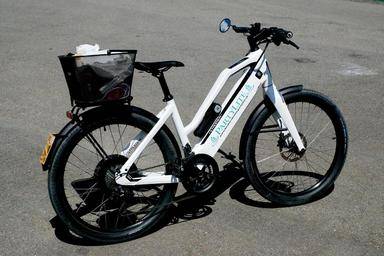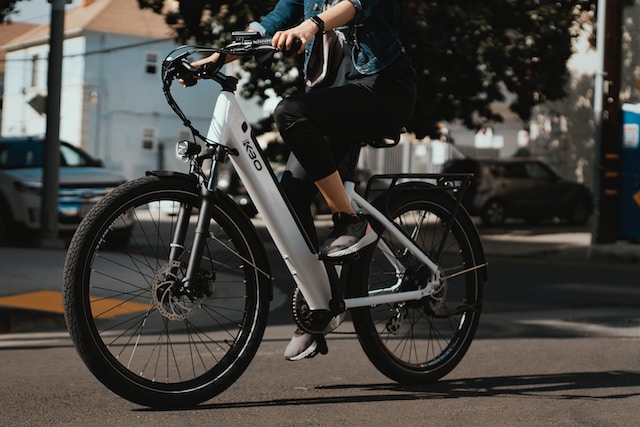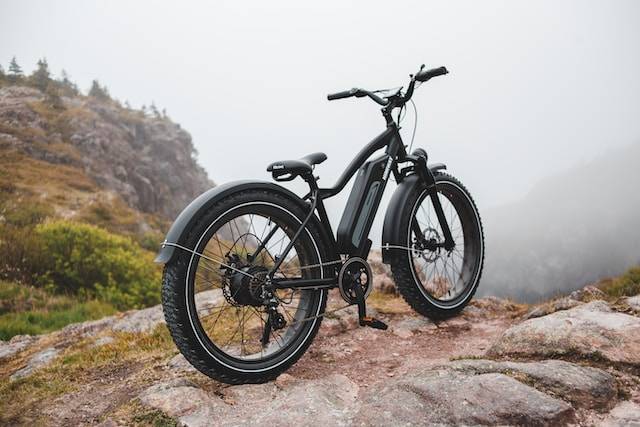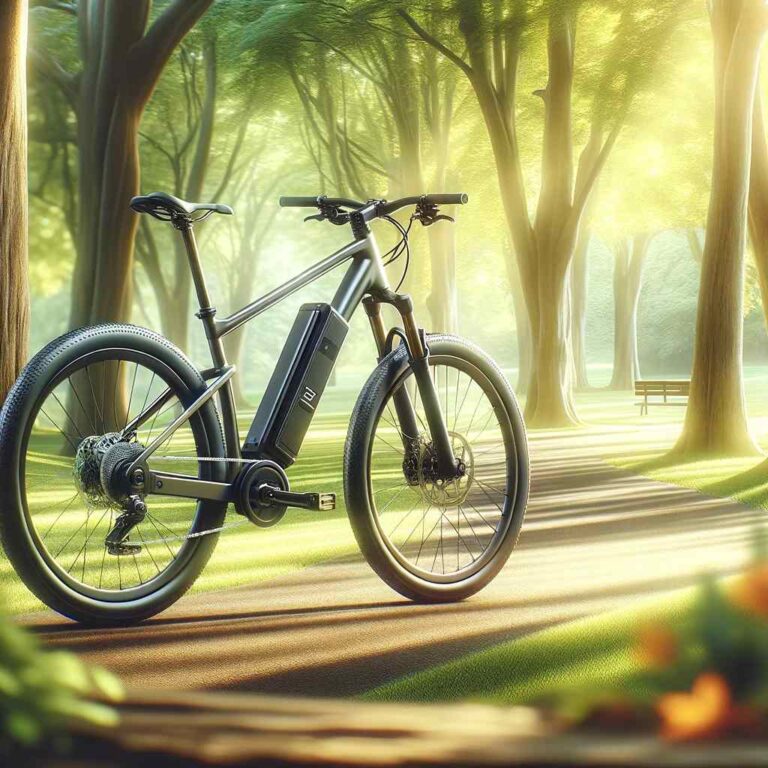7 Things to Consider When Choosing an E-Bike Motor Wattage
The electric bike revolution is upon us! E-bikes have become a game-changer for transportation, offering an eco-friendly and sweat-reducing way to get around. Whether you’re a seasoned cyclist looking for a little extra boost on your commute, a fitness enthusiast seeking a new challenge, or simply someone who wants to enjoy the outdoors without breaking a sweat, e-bikes offer a compelling solution.
But with a dazzling array of e-bikes on the market, one question often trips up new riders: motor wattage. Motor wattage is essentially a measure of an electric motor’s power output. It directly affects how much assist you’ll get from your e-bike’s motor, impacting your speed, climbing ability, and overall riding experience.
Choosing the right motor wattage can feel overwhelming. Do you need a powerhouse motor to conquer mountains, or will a more modest option suffice? Don’t worry, we’re here to help! This guide dives deep into 7 Things to Consider When Choosing an E-Bike Motor Wattage (250W vs. 750W and Beyond). By understanding these key factors, you’ll be well on your way to finding the perfect e-bike match and powering your ride towards endless possibilities!
Key Takeaways
- Terrain and riding conditions are crucial factors in choosing motor wattage.
- Consider your fitness level and desired level of assistance.
- E-bike wattage laws vary by region, so check your local regulations.
- Higher wattage motors drain battery life faster, impacting range.
- E-bike weight and motor placement affect performance.
- Balance budget with features and long-term needs.
1. Terrain and Riding Conditions:
The terrain you conquer and the conditions you ride in will significantly impact your choice of motor wattage. Here’s a breakdown to help you select the perfect climbing companion for your e-bike adventures:
- Flat Terrain & City Riding: If your daily commute involves smooth, paved surfaces with minimal inclines, a 250w motor can be a fantastic choice. These motors are lightweight, which keeps your e-bike nimble and maneuverable for navigating city streets. Additionally, a lower wattage motor translates to less battery drain, offering a longer range on those extended commutes. You’ll still enjoy a gentle pedal-assist that reduces fatigue and makes conquering slight inclines a breeze.
- Rolling Hills & Moderate Terrain: For commutes or recreational rides with occasional rolling hills, a 350w to 500w motor might be ideal. This mid-range option provides a noticeable boost to help you power up those moderate inclines without feeling overwhelmed by extra weight or faster speeds. It’s a great choice for riders who want some assistance but still enjoy the exercise aspect of cycling.
- Hilly Areas & Off-Road Adventures: If your idea of a good time involves conquering steep inclines, traversing rough terrain, or exploring off-road trails, then a higher wattage motor (500w to 750w) is your best bet. These motors provide the muscle you need to tackle challenging climbs and navigate uneven surfaces with confidence. They’re perfect for riders who prioritize power and performance over extended range on a single charge.
Remember: Terrain isn’t the only factor to consider. Think about factors like wind resistance – if you’ll be riding into strong headwinds regularly, opting for a slightly higher wattage motor might be beneficial.
2. Your Fitness Level and Desired Assistance:
E-bikes are fantastic for riders of all fitness levels. Whether you’re a seasoned cyclist looking to extend your range and reduce fatigue, or someone who wants to enjoy the outdoors without an intense workout, e-bikes offer a customizable experience. Here’s how your fitness level and desired level of assistance can influence your motor wattage choice:
- Enjoying the Ride with a Boost: If you’re a relatively fit rider who enjoys pedaling but wants a little extra help maintaining speed or conquering slight inclines, a 250w or 350w motor is a perfect choice. These motors provide a subtle yet noticeable pedal-assist, making your ride more enjoyable and reducing fatigue over longer distances. You’ll still get a great workout, but with the added benefit of feeling fresher at your destination.
- Cruising Effortlessly: For riders who prioritize a more relaxed cycling experience, a 350w motor can be a great option. It offers a more pronounced boost than a 250w motor, making pedaling on flat terrain feel effortless. This is ideal for leisure rides, scenic commutes, or cruising around town.
- Conquering Hills with a Powerful Ally: If your cycling goals involve conquering steeper hills or traversing challenging terrain, a higher wattage motor (500w to 750w) is your best friend. These motors provide significant power to help you effortlessly climb inclines that would be daunting on a traditional bike. They’re also ideal for heavier riders who might require more assistance to maintain speed and efficiency.
Your desired level of assistance is equally important. If you enjoy the feeling of pedaling and getting a workout, even on hills, a lower wattage motor might suffice. However, if you prioritize a more effortless ride with maximum power on demand, a higher wattage motor is the way to go.
RELATED CONTENT
3. E-Bike Wattage Laws and Regulations:
E-bikes are a rapidly growing mode of transportation, but it’s important to remember that they might be subject to specific regulations depending on your location. Understanding e-bike wattage laws and classifications is crucial before you hit the road.
Here’s a breakdown to keep you informed:
- The Power of Knowing Your Limits: E-bike regulations can vary significantly by country, state, and even city. In the United States, for example, the League of American Bicyclists classifies e-bikes into three categories: Class 1, Class 2, and Class 3. Class 1 and Class 2 e-bikes typically have a 250w motor limit with pedal-assist only, reaching speeds of up to 20 mph. Class 3 e-bikes might allow for higher wattages and speeds with both pedal-assist and throttle options, but these regulations can vary by jurisdiction.
- Beyond the US: In Europe, e-bike regulations are generally more standardized. The European Parliament has set a limit of 250w for continuous power output and a speed limit of 25 km/h (around 15.5 mph) for e-bikes to be classified as bicycles and exempt from registration and licensing requirements.
- Stay Informed, Ride Responsibly: Always check your local e-bike laws and regulations before purchasing a higher wattage e-bike. This information is typically available on your city or state government’s website. By understanding the rules, you can ensure a safe and enjoyable riding experience while staying compliant with local laws.
Remember: E-bike regulations are constantly evolving. It’s a good practice to stay updated on any changes in your area to ensure continued safe and legal riding.
4. Battery Life and Range:
The beauty of e-bikes lies in their ability to extend your range and reduce fatigue. However, it’s important to remember that battery life and range are directly linked to motor wattage. Here’s how to find the sweet spot between power and distance:
- Higher Wattage = More Drain: While a higher wattage motor provides a significant power boost for tackling hills and conquering challenging terrain, it also consumes battery life at a faster rate. This means you might need to recharge more frequently compared to a lower wattage motor.
- Understanding Your Riding Habits: Consider your typical riding distance. If your daily commute is a short trip around town, a lower wattage motor (250w or 350w) paired with a larger capacity battery might be the perfect combination. You’ll have enough power for slight inclines and a good range to reach your destination without needing a mid-ride recharge.
- Planning for Longer Adventures: For longer rides or adventures that cover significant distances, a higher wattage motor (500w or 750w) can be beneficial, especially if the route involves challenging terrain. However, remember to factor in the potential need for more frequent charging or carrying a spare battery to ensure you don’t run out of juice halfway through your journey.
- Beyond Wattage: It’s important to remember that motor wattage isn’t the only factor affecting battery life. Terrain, riding style, wind resistance, and rider weight all play a role. For example, climbing hills or riding into strong headwinds will drain the battery faster than cruising on flat terrain with minimal wind resistance.
Finding the Balance: By considering your typical riding distance, terrain variations, and desired level of assistance, you can choose a motor wattage that offers the perfect balance between power and range for your e-bike adventures.
5. E-Bike Weight and Motor Placement:
The weight of your e-bike and the placement of the motor can significantly impact its performance, handling, and overall riding experience. Here’s how these factors work together:
- Balancing Power with Maneuverability: E-bikes with powerful motors (500w or 750w) tend to be heavier due to the larger motor and potentially a larger battery required to support the increased power output. While these motors offer impressive climbing ability, the additional weight can affect acceleration and maneuverability, especially on tight turns or technical terrain.
- Lightweight Champions: Lower wattage motors (250w or 350w) are generally lighter, making the e-bike more nimble and easier to handle. This is ideal for riders who prioritize agility and responsiveness, particularly in urban environments or on twisty trails. Additionally, a lighter e-bike requires less power to maintain speed, potentially extending your range on a single charge.
- Motor Placement Matters: The placement of the motor in the e-bike frame also plays a role in handling. Mid-drive motors, positioned near the pedals, offer a more balanced weight distribution, resulting in a more natural riding experience. Hub motors, located in the front or rear wheel, can be lighter but might affect handling, especially at higher speeds or on uneven terrain.
Finding Your Perfect Match: Consider your riding style and priorities. If you value agility and a lightweight feel, a lower wattage motor paired with a lighter e-bike frame might be ideal. For riders who prioritize power for conquering hills and tackling challenging terrain, a heavier e-bike with a powerful mid-drive motor might be the better choice.
6. Budget and Long-Term Value:
E-bikes offer a fantastic blend of performance and affordability compared to traditional gas-powered vehicles. However, it’s important to consider the cost factor when choosing a motor wattage. Here’s how to find the e-bike that fits your budget and long-term needs:
- Higher Wattage = Higher Price Tag: Generally, e-bikes with higher wattage motors (500w or 750w) tend to be more expensive than their lower wattage counterparts (250w or 350w). This is because these motors are more powerful and require additional components like larger batteries to support their increased power output.
- Evaluating Your Needs: Before you splurge on a high-wattage e-bike, take a step back and assess your actual riding needs. If your commute involves mostly flat terrain with minimal hills, a lower wattage motor might be perfectly adequate, saving you money upfront without sacrificing performance for your everyday use.
- Thinking Long Term: If you envision yourself tackling more challenging terrain in the future, or if you’re a heavier rider who might require more power for comfortable riding, investing in a higher wattage motor from the start might be a wiser long-term decision. Upgrading an e-bike’s motor later can be expensive and impractical, so consider your future riding aspirations when making your initial purchase.
- Beyond the Motor: Remember, the motor wattage is just one component that affects the overall price of an e-bike. Other factors like battery capacity, frame materials, and brand reputation also play a role. Shop around and compare different models to find the best value for your budget that meets your specific needs.
Finding the Financial Sweet Spot: By considering your typical riding routes, budget constraints, and potential future riding goals, you can choose a motor wattage that offers the best combination of affordability, performance, and long-term value for your e-bike investment.
7. Considering Future Needs:
E-bikes are a fantastic way to experience the joy of cycling while reducing fatigue and extending your range. Choosing the right motor wattage is crucial for a satisfying riding experience, but it’s also important to consider your future needs. Here’s how to ensure your e-bike continues to meet your expectations as your cycling adventures evolve:
- Planning for Evolving Horizons: Are you a fitness enthusiast who currently enjoys mostly flat commutes, but dream of conquering challenging mountain trails someday? If you anticipate your riding style becoming more adventurous in the future, opting for a higher wattage motor (500w or 750w) from the start might be a wise investment. This way, you’ll be prepared to tackle steeper inclines and more demanding terrain without needing to upgrade your e-bike later.
- Growing Rider, Growing Needs: As your fitness level improves, you might find yourself craving more power to push yourself on longer rides or conquer steeper climbs. Choosing a motor wattage with some headroom for future growth can ensure your e-bike continues to be a reliable partner in your cycling journey.
- Adaptability is Key: While some e-bikes allow for motor upgrades, the process can be expensive and time-consuming. By considering your potential future riding goals when choosing your initial motor wattage, you can ensure your e-bike remains a versatile and enjoyable companion for years to come.
Invest in Your E-Biking Journey: Think beyond your current riding habits. By choosing a motor wattage with some room for future growth, you’ll be investing in your e-biking journey, ensuring your trusty steed is equipped to support your evolving cycling aspirations. After all, the perfect e-bike is one that grows with you!
Conclusion:
Choosing the right e-bike motor wattage is like picking the perfect travel companion – it should complement your style, support your needs, and be ready for the adventure ahead. By considering the 7 factors explored in this guide – terrain, fitness level, regulations, battery life, weight, budget, and future needs – you’ll be well-equipped to make an informed decision.
Remember, the ideal motor wattage is a personal choice. There’s no “one size fits all” answer. However, by understanding how these factors influence your e-bike’s performance and riding experience, you can confidently navigate the world of e-bikes and find the perfect match to power your ride towards endless possibilities!
Ready to embark on your e-bike adventure? Here are some helpful resources to get you started:
- Pedelecs: Electric Bikes – An Introduction by the League of American Bicyclists https://learn.bikeleague.org/: This comprehensive guide dives deeper into the world of e-bikes, covering everything from types and benefits to safety tips and choosing the right e-bike for you.
- E-Bike Buyer’s Guide by Electric Bike Review https://electricbikereview.com/: This informative guide offers valuable tips and considerations for purchasing your first e-bike, helping you navigate the features, specifications, and terminology to find the perfect match.
Kristina Grant is not just an enthusiast but a true authority on electric bikes. Nestled in the coastal beauty of Virginia, Kristina has found the perfect backdrop for her passion for electric biking. As a dedicated wife and homeschooling mom, her life revolves around family, faith, and the thrill of adventure.
Originally hailing from Ohio, Kristina's journey with electric bikes began as a curiosity and quickly evolved into a deep expertise. Her blog is a testament to her love for electric biking, combining her fascination for eco-friendly transportation with her coastal lifestyle.
When she's not cruising the beach on her electric bike, you'll find Kristina indulging in her other loves: long walks along the shore, getting lost in a good book, and cherishing moments with her loved ones. With a heart as big as her love for animals, especially cats, Kristina brings a unique perspective to the electric bike world, grounded in her strong faith in God and her dedication to a sustainable lifestyle.
Through her blog, Kristina shares her extensive knowledge of electric bikes, offering valuable insights, tips, and recommendations to fellow enthusiasts. Whether you're a seasoned rider or a newcomer to the electric bike scene, Kristina's blog is your go-to source for all things electric biking, fueled by her passion, expertise, and the scenic beauty of coastal Virginia.







